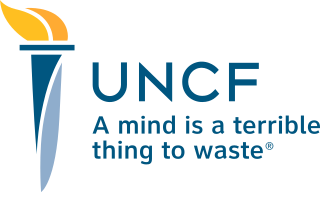
TheUnited Negro College Fund, also known as UNCF, is an American philanthropic organization that funds scholarships for underrepresented students and general operating support for 37 private Historically Black Colleges and Universities (HBCUs). In 1943, Dr. Frederick D. Patterson wrote to The Pittsburgh Courier proposing the creation of an alliance of Black colleges that would raise money for their mutual benefit. UNCF was founded on April 25, 1944, under the leadership of Dr. Patterson, Dr. Mary McLeod Bethune, and others on the belief that there is strength in numbers—that HBCUs ought to make a joint effort to appeal for funds—as well as the belief that education was crucial to Black economic and social mobility. At the start, UNCF served 27 member colleges and universities, totaling 12,000 students. Its first campaign received the support of many prominent Americans including President Franklin D. Roosevelt and John D. Rockefeller, II. During its first annual campaign, the collective effort raised $765,000, equivalent to $10 million today, which is three times what its member institutions had raised separately the previous year.
The Koch family foundations are a group of charitable foundations in the United States associated with the family of Fred C. Koch. The most prominent of these are the Charles Koch Foundation and the David H. Koch Charitable Foundation, created by Charles Koch and David Koch, two sons of Fred C. Koch who own the majority of Koch Industries, an oil, gas, paper, and chemical conglomerate which is the US's second-largest privately held company. Charles' and David's foundations have provided millions of dollars to a variety of organizations, including libertarian and conservative think tanks. Areas of funding include think tanks, political advocacy, climate change denial, higher education scholarships, cancer research, arts, and science.

Eli Lilly and Company is an American pharmaceutical company headquartered in Indianapolis, Indiana, with offices in 18 countries. Its products are sold in approximately 125 countries. The company was founded in 1876 by, and named after, Colonel Eli Lilly, a pharmaceutical chemist and a Union Army veteran of the American Civil War.

Butler University is a private university in Indianapolis, Indiana. Founded in 1855 and named after founder Ovid Butler, the university has over 60 major academic fields of study in six colleges: the Lacy School of Business, College of Communication, College of Education, College of Liberal Arts and Sciences, College of Pharmacy and Health Sciences, and Jordan College of the Arts. Its 295-acre (119 ha) campus is approximately five miles (8.0 km) from downtown Indianapolis.

Eli Lilly was an American soldier, pharmacist, chemist, and businessman who founded the Eli Lilly and Company pharmaceutical corporation. Lilly enlisted in the Union Army during the American Civil War and recruited a company of men to serve with him in the 18th Independent Battery Indiana Light Artillery. He was later promoted to major and then colonel, and was given command of the 9th Regiment Indiana Cavalry. Lilly was captured in September 1864 and held as a prisoner of war until January 1865. After the war, he attempted to run a plantation in Mississippi, but it failed and he returned to his pharmacy profession after the death of his first wife.
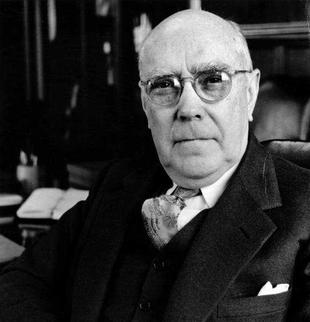
Eli Lilly, sometimes referred to as Eli Lilly Jr. to distinguish him from his grandfather of the same name, was an American pharmaceutical industrialist and philanthropist from Indianapolis, Indiana, United States. During his tenure as head of Eli Lilly and Company, which was founded by his grandfather, the company grew from a successful, family-owned business into a modern corporation and industry leader. Lilly served as the company president (1932–1948), chairman of the board of directors, and honorary chairman of the board.

The Children's Museum of Indianapolis is the world's largest children's museum. It is located at 3000 North Meridian Street, Indianapolis, Indiana in the United Northwest Area neighborhood of the city. The museum is accredited by the American Alliance of Museums. It is 472,900 square feet (43,933.85 m2) with five floors of exhibit halls and receives more than one million visitors annually. Its collection of over 130,000 artifacts and exhibit items is divided into two domains: Arts & Humanities and the Natural Sciences. Among the exhibits are simulated Cretaceous and Jurassic dinosaur habitats, a carousel, a steam locomotive, and the glass sculpture Fireworks of Glass Tower and Ceiling. The museum's focus is family learning; most exhibits are designed to be interactive, allowing children and families to actively participate.
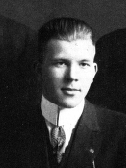
Josiah Kirby "Joe" Lilly Jr. was a businessman and industrialist who served as president and chairman of the board (1953–66) of Eli Lilly and Company, the pharmaceutical firm his grandfather, Colonel Eli Lilly, founded in Indianapolis in 1876. Lilly, the younger son and namesake of Josiah K. Lilly Sr., graduated from the University of Michigan's School of Pharmacy in 1914 where he was a member of the Chi Psi Fraternity. He served in the U.S. Army in France during World War I. At Eli Lilly and Company, where his primary focus was marketing and human resources, he served as vice president of marketing, executive vice president of the company, and president of Eli Lilly International Corporation, before succeeded his older brother, Eli Jr., as company president in 1948 and as chairman of the board in 1953.
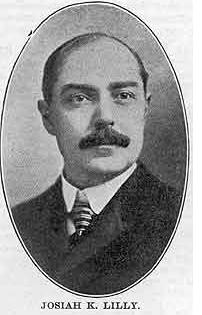
Josiah Kirby Lilly Sr., nicknamed "J. K.," was an American businessman, pharmaceutical industrialist, and philanthropist who became president and chairman of the board of Eli Lilly and Company, the pharmaceutical firm his father, Colonel Eli Lilly, founded in 1876. Josiah, the colonel's sole heir, began working at his father’s company at the age of fourteen. He graduated from the Philadelphia College of Pharmacy and Science and became superintendent of the Lilly laboratories in 1882 and company president in 1898. Under his leadership, the company introduced standardized manufacturing processes, expanded its sales force, and increased its research efforts to develop new drugs. Eli Lilly and Company grew into one of the largest and most influential pharmaceutical corporations in the world, and the largest corporation in Indiana. Lilly’s eldest son, Eli Jr., succeeded him as president in 1932. His younger son, Josiah Jr. ("Joe"), succeeded Eli as company president in 1948. J. K. served as chairman of the board from 1932 until his death in 1948.
Community foundations (CFs) are instruments of civil society designed to pool donations into a coordinated investment and grant making facility dedicated primarily to the social improvement of a given place. Community foundations are a global phenomenon with 1700 existing around the world, of which over 700 are in the United States. Private foundations are typically endowed by an individual or a single family.

Indiana Landmarks is America's largest private statewide historic preservation organization. Founded in 1960 as Historic Landmarks Foundation of Indiana by a volunteer group of civic and business leaders led by Indianapolis pharmaceutical executive Eli Lilly, the organization is a private non-governmental organization with nearly 6,000 members and an endowment of over $40 million. The organization simplified its name to Indiana Landmarks in 2010.
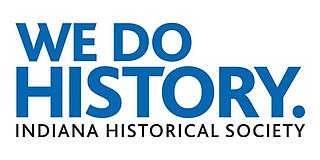
The Indiana Historical Society (IHS) is one of the United States' oldest and largest historical societies and describes itself as "Indiana's Storyteller".

IU Michael A. Carroll Track & Soccer Stadium is a 12,100-seat soccer and track and field stadium located in Indianapolis, Indiana, United States. It is the home of the Indiana University-Purdue University Indianapolis Jaguars track and field and soccer teams. It was also the original home of the Indy Eleven.
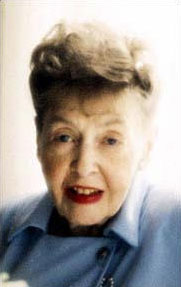
Ruth Lilly was an American philanthropist, the last surviving great-grandchild of Eli Lilly, founder of the Eli Lilly and Company pharmaceutical firm, and heir to the Lilly family fortune. A lifelong resident of Indianapolis, Indiana, Ruth Lilly is estimated to have given away nearly $800 million of her inheritance during her lifetime, mostly in support of the arts, education, health, and environmental causes in Indianapolis and in Indiana.

IUPUI University Library is the university library of Indiana University–Purdue University Indianapolis. IUPUI is an urban campus of Indiana University and Purdue University in Indianapolis, Indiana, United States. Indiana University is the managing partner.
The following is a timeline of the history of the city of Indianapolis, Indiana, United States.

The Indiana Biosciences Research Institute (IBRI) is an American nonprofit translational research organization headquartered in Indianapolis, Indiana, United States within the 16 Tech Innovation District. The IBRI is the nation's first industry-led collaborative life sciences research institute. Its primary focus is on better understanding the pathogenesis of type 1 and type 2 diabetes to translate this knowledge into novel therapies, while also expanding into other metabolic diseases that share common systems and pathways.
Caroline Marmon Fesler was an American art and music patron, cultural philanthropist, and fine-art collector. Her contributions to the Indianapolis, Indiana, arts community included financial support and gifts of fine art to the Art Association of Indianapolis, in addition to serving as a board member of Herron School of Art (1916–1947) and president of the Art Association of Indianapolis (1941–1947). Fesler was also a patron of the Indianapolis Symphony Orchestra and founded the city's Ensemble Music Society. Her major art collecting interests and acquisitions tended toward Post-Impressionist and modernist paintings, although not exclusively, and included paintings by Georges Braque, Paul Cézanne, Marc Chagall, Henri Matisse, Pablo Picasso, Georgia O'Keeffe, Georges Seurat, and Vincent van Gogh, among others. The Marmon Memorial Collection, which Fesler established in honor of her parents, remains an important part of the Indianapolis Museum of Art's permanent collections.
The John Templeton Foundation is a philanthropic organization that reflects the ideas of its founder, John Templeton, who became wealthy via a career as a contrarian investor, and wanted to support progress in religious and spiritual knowledge, especially at the intersection of religion and science. He also sought to fund research on methods to promote and develop moral character, intelligence, and creativity in people, and to promote free markets. In 2008, the foundation was awarded the National Humanities Medal. In 2016, Inside Philanthropy called it "the oddest—or most interesting—big foundation around."
The National Institute for Sports and Fitness (NIFS) building was constructed in 1987. The building works with the IU School of Physical Education and Tourism Management. The building is located on the IUPUI campus and in White River State Park. The fitness center was constructed alongside the Michael A. Carroll Track & Soccer Stadium and the Natatorium to position IUPUI as a major physical education and sports leader for the city. The Indianapolis Tennis Center and the other facilities would host a series of events, competitions, and programs in conjunction with the city of Indianapolis and IUPUI.














